If we gave an award for best use of iridescent tile to create a sense of lighting in a scene, artist Terry Broderick’s mosaic “Pittsburgh Cityscape,” would have won it hands down. It is a must-see mosaic.
Even if you aren’t planning on using iridescent tile for lights in a night scene, Terry’s mosaic is worth taking a look because the sense of light and atmosphere he creates in it is nothing less than impressive.
If you are trying to make things like stars in a night sky or streetlights reflecting across water, this mosaic is a tutorial on how to do it right.
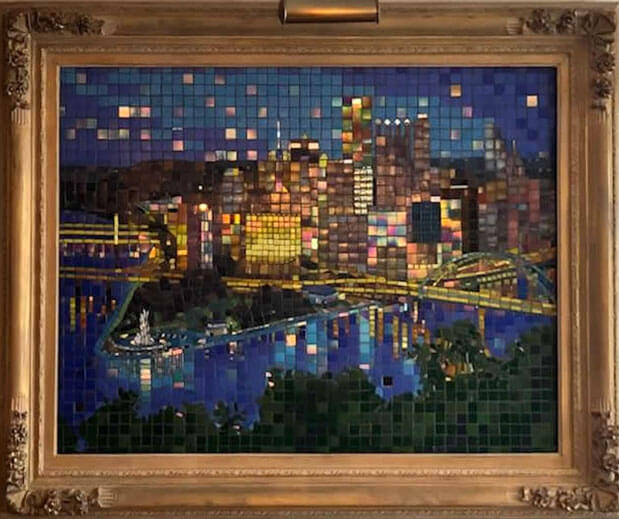
Starry Night
When I first saw this mosaic, my immediate reactions was “Van Gogh Pittsburg” because it has the same sense of nighttime atmosphere and light as Van Gogh’s painting Starry Night. That is quite an accomplishment seeing how Terry’s mosaic doesn’t even use the swirling andamento that is generally regarded as the defining characteristic of the famous painting.
To appreciate what an accomplishment that is, search Google Images for “starry night variations parodies” and look at how each of these imitations rely on Van Gogh’s swirling brushstrokes.
Terry used Van Gogh’s painting for inspiration and even managed to capture the essential “feel” of it (to my eye), but he still made his art original.
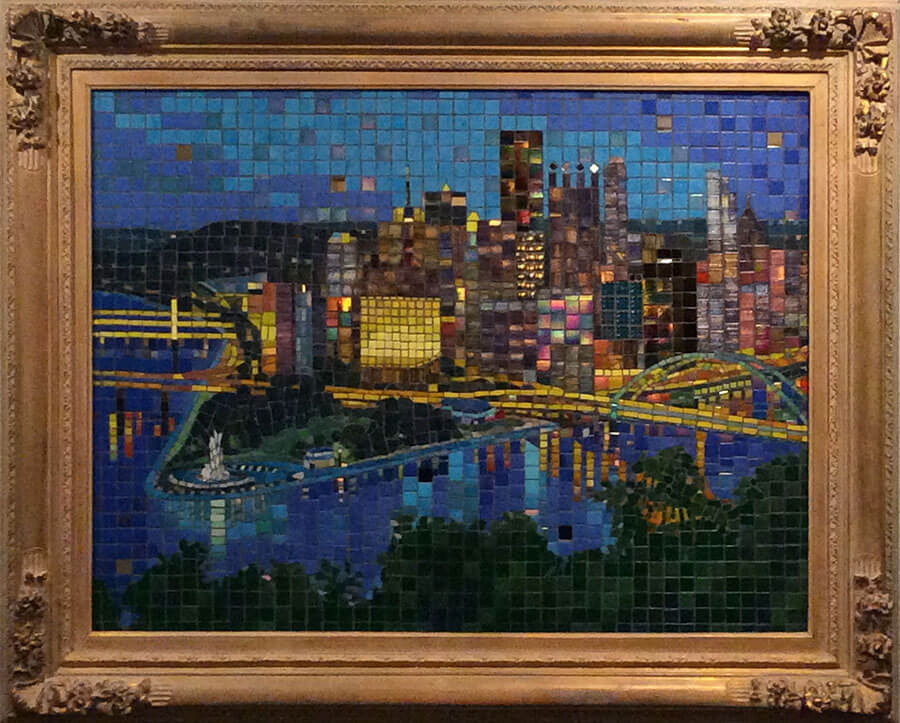
Not Oil Paint
To capture the feel of the lighting in a scene, especially in a landscape, is generally regarded as an accomplishment, even for a formally trained artist working in oil paint, with all the nuance and power that medium has to offer. Terry did it in tile.
Not only that, but Terry’s tile is largely arranged in a grid, which is yet another constraint, one that usually detracts from natural rendering and a sense of verisimilitude.
Also note how the size of the tile is relatively large compared to the level of detail being depicted. For me, that has always been a mark of mosaic skill, and I think most anyone who has ever cut up tile and tried arranging it to create an image would agree.
And yet, look at the reflections on the water and the illuminated buildings and see how spot on they are as a whole.
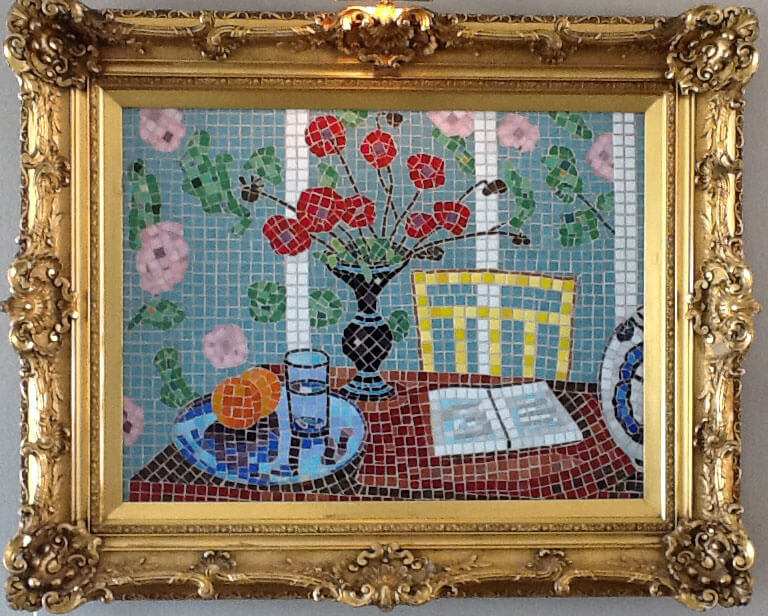
Modern Masters
Terry also sent me some photos of his other mosaics, which include some tributes to Matisse, the great modern master and fauvist painter. Like Terry, I am in love with post-Impressionist painting and Fauvist painting and how this period gave birth to all the imaginative work that we take for granted today.
I very much appreciate how Terry puts his modern fauvist mosaics in Rococo/Baroque frames, which I take as another reference to early 20th-century painting and how it was received and interpreted in context of what came before. Specifically I am thinking of Chagall’s ceiling of the Paris Opera House and how the entire Rococo building serves as one large gilt frame for the painted ceiling.
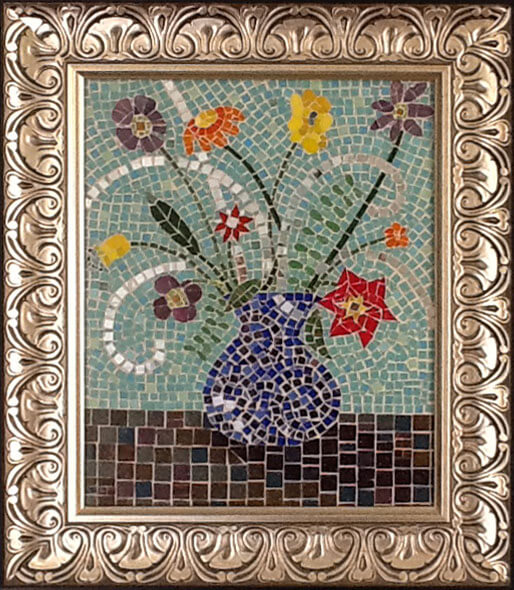
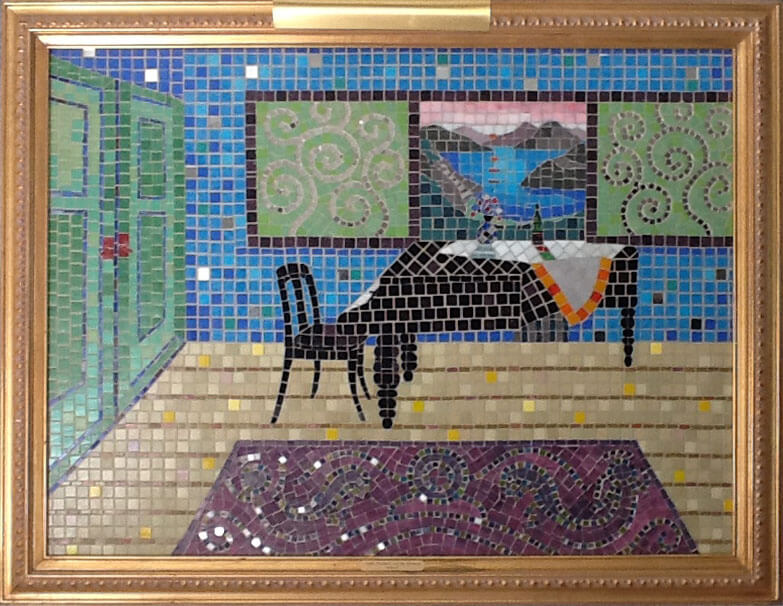
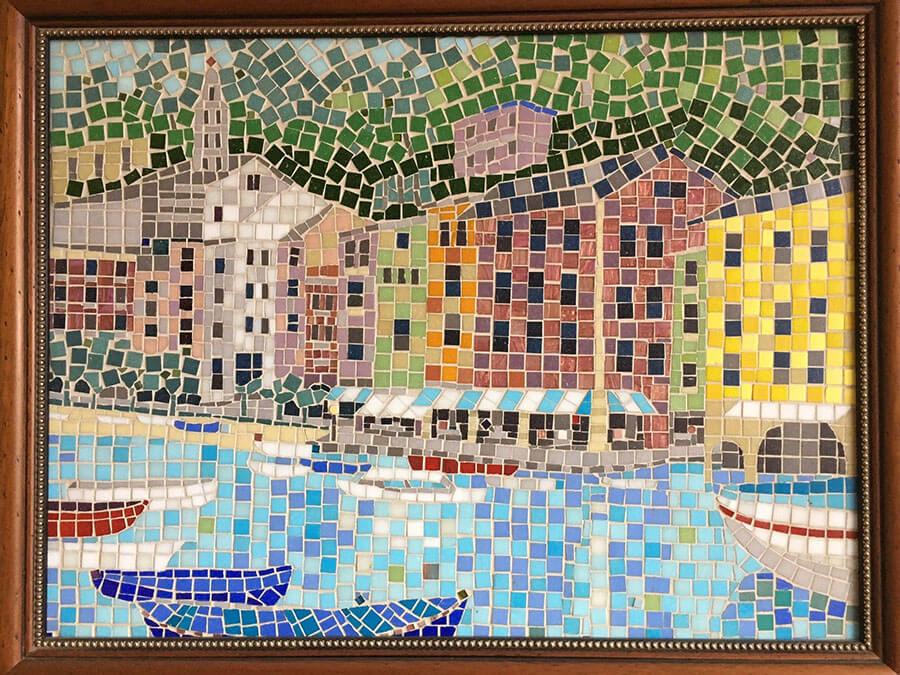

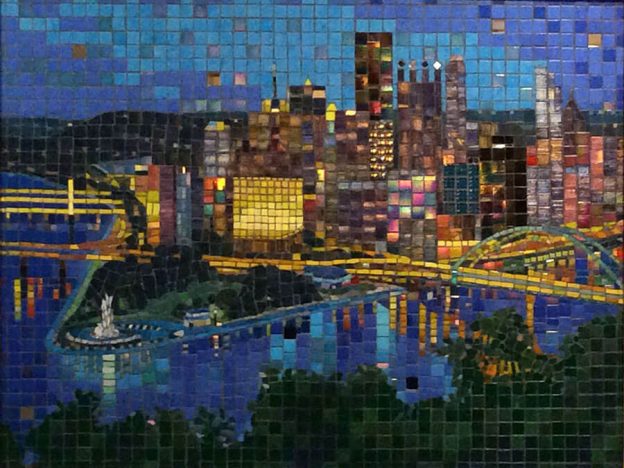
Leave a Reply